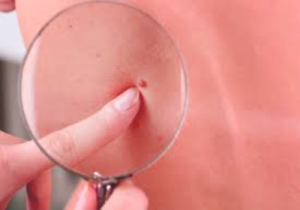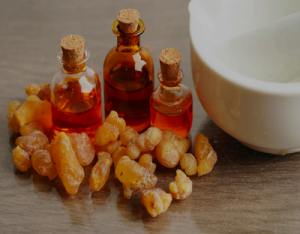Skin tags and 20 remedies
what are skin tags , either cancerous or not
Skin tags, which are soft, noncancerous growths, typically appear in the creases of the neck, armpits, breasts, groyne, and eyelids. These enlargements are caused by loose collagen fibres that become stuck inside skin folds that are thicker.Skin tags and there 20 remedies having natural or chemical or others methods involve.
Kemunto Mokaya, MD, tells Healthline that skin tags are also very prevalent, affecting nearly half of the population. According to her, elderly folks, those who are overweight, and diabetics are also more likely to have them.
When grabbed by jewellery or clothing, these skin lesions—which are typically painless—can become unpleasant. Relief is possible if these growths are inconvenient. Here are some tips on how to remove skin tags at home, over-the-counter medicines, and surgical methods.

Why do skin tags appear?
There is a link between the human papillomavirus (HPV) and skin tags, according to studies . Skin tag development may also be influenced by insulin resistance, which can result in type 2 diabetes and prediabetes. Those who have insulin resistance have poor blood glucose absorption.
Multiple skin tags were linked to insulin resistance, a high body mass index, and elevated triglycerides, according to a 2010 study.
20 Remedies for Skin tag removal
The following techniques are among the most often used for eradicating moles, however despite claims to the contrary, they have not been scientifically confirmed to be successful.
Anyone using these cures should carefully follow the directions and be aware that the surrounding skin may be damaged, irritated, or scarred.
1. Garlic
Some individuals think that by repeatedly adding garlic to a mole, it will eventually fade or vanish. This is due to the enzymes found in garlic, which may disintegrate the cell clusters responsible for the mole. Skin burns can result from garlic.
2.Castor oil and baking soda mixture .
Castor oil and baking soda can be combined to make an ointment that, when used for a few weeks, may help eradicate moles. The idea is that the castor oil protects the skin while the baking soda dries out the mole.
3.Oregano oil
Castor oil works well as a carrier oil to dilute oregano essential oil because it can be irritating on the skin. A mole may disappear if the mixture of oils is applied many times each day for a few weeks.
4.Iodine
A mole might peel off after using a particular iodine concentration for a few weeks. To protect the skin from the burning effects of iodine, apply petroleum jelly all over. Be extremely cautious when using iodine because it is poisonous. On broken skin, never apply.
5.Tea tree oil
The antibacterial and anti-inflammatory qualities of tea tree essential oil make it a well-researched essential oil. Some suggest that putting tea tree oil on the mole several times each day for a while will make it go away. Tea tree oil should only be used with caution because it can be poisonous if eaten.
6.Flaxseed oil
according to searcher . The flaxseed oil has healing qualities that can speed up the healing of wounds and other abrasions. Additionally, it is used by people to help remove moles as well as other dark areas and imperfections.

7. Oil of frankincensen
According to reports, the qualities of frankincense essential oil assist the skin dry out and absorb oils. Advocates contend that daily applications of frankincense oil to moles cause them to dry out, develop a scab, and eventually fall off.
Before applying essential oils to the skin, always dilute them in a carrier oil (such as sweet almond oil or coconut oil).

8. Peeled bananas
Some people believe that the unique enzymes and acids found in banana peels can aid with mole removal. The ability of banana peel to moisturise the skin is one possible advantage.
9.Honey
According to searcher indicate that honey has antioxidants and anti-inflammatory properties. Some believe that applying honey to moles will cause them to fade away within a few days.
10.Hydrogen peroxide
When applied to the skin, hydrogen peroxide is said to have qualities that will aid in the removal of moles. Three to four applications each day are recommended. To learn which brand of hydrogen peroxide is recommended for this use, consult a pharmacist.
11.Aloe vera
Numerous well-known skin-promoting qualities are present in aloe vera. Aloe vera has some users who think that regular use will help them get rid of moles. Apply a manufactured good or a plant to the mole. It is crucial to perform an allergy test first because aloe vera might cause allergies.
12.Coconut oil
There are studies that suggest coconut oil may help with other skin conditions, but there is no evidence that it may eradicate moles. Some individuals, however, think that everyday application will cause the mole’s size to decrease.
13.Cauterization
This entails removing the skin tag via burning. After a few treatments, the majority of tags go.
14.Cryotherapy
Applying liquid nitrogen to the tag causes it to freeze off during cryotherapy. One or two treatments are typically enough.
15.Ligation
To stop the flow of blood and finally cause the tag to fall off, a medical professional ties surgical thread around the tag.
16.Excision
This entails cutting the tag off with a blade.
17.Removal lotions
In some situations, these creams are useful. Because salicylic acid and tea tree oil might irritate the skin or result in contact dermatitis, Dr. Mokaya advises avoiding products containing these components.
In order to guarantee that the skin absorbs the cream completely, the directions for using some of these creams advise washing the skin with an alcohol swab and filing down the tag before applying the cream.The skin tag should disappear in two to three weeks, according to the labelling on some of these products.
18.kit for freezing
Medical workers in a clinical setting employ liquid nitrogen to eliminate surplus skin tissue. Cryotherapy is the term for this.According to Dr. Mokaya, cryotherapy may include temperatures as low as 320.8°F (-195°C). Temperatures between 4°F and 58°F are necessary for benign lesions like skin tags.Researching and choosing the over-the-counter kit that, when used properly, can achieve the lowest temperature is advised by Dr. Mokaya.
As usual, heed the directions. A number of applications of the product might be necessary until the growth disappears.
Avoid allowing the mist from home freezing kits contact any nearby skin. Protecting the skin beforehand by using petroleum jelly to the region next to the tag can be beneficial.
19.Trimming or cutting
It may be tempting to remove a skin tag with scissors, nail clippers, or a sharp blade. If a healthcare professional has approved, only do this after thoroughly cleaning the skin and the tool to avoid spreading infection.According to Dr. Mokaya, this causes agony even though it offers the immediate satisfaction of removal. She continues by advising against using this procedure if you use blood thinners or have a bleeding issue.
Additionally, avoid trimming or cutting medium or large tags off since this can result in bleeding. Tags often range in width from a few millimetres to two inches.
Also, avoid using this technique on tags near the genitalia or the area around the eyes.
20.apple cider vinegar
There hasn’t been much research on the topic of apple cider vinegar and skin tags.
A cotton ball soaked in vinegar is usually applied to the tag with a bandage and left on for 10 minutes, twice or three times per day, until the tag comes off.
Watch out for skin irritation, though, and cease using it if any symptoms of a reaction appear. Due to its high acidity, apple cider vinegar can burn the skin. Never apply it close to the eyes.



